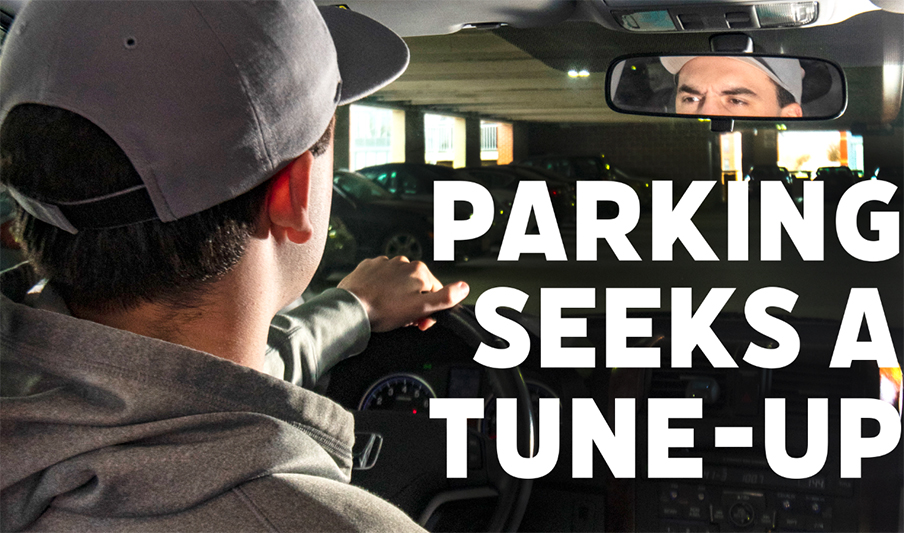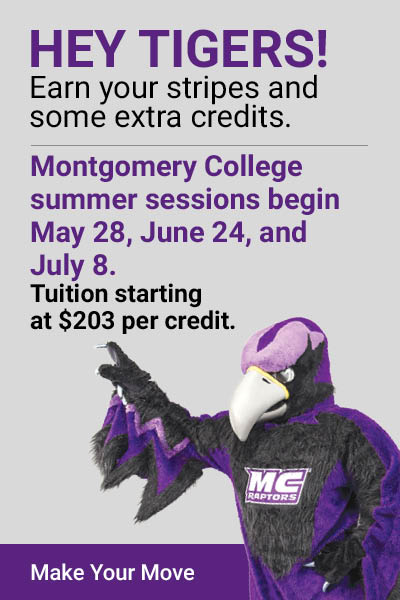
Parking seeks a tune-up
By: Tim Klapac, Senior Editor
Photo by Brendan Felch/ The Towerlight
The University has hired design and planning firm Kimley-Horn to assess the difficulties students, faculty and staff have endured when trying to find a place to park everyday.
“The University has had extensive changes over the years, to include significant enrollment growth as well as the construction of many new buildings across campus,” said Pam Mooney, Director of Parking and Transportation Services. “In an effort to help ensure we are providing the best services to the campus community, we have engaged an industry consultant, Kimley-Horn, to review the Parking and Transportation programs.”
As part of Kimley-Horn’s review of Towson’s transportation programs, the firm “will be gathering input from the campus community, become familiar with the campus culture and review current policies, procedures and approaches,” Mooney said.
Representatives from Kimley-Horn visited TU’s campus and held two forums Feb. 4 and Feb. 5 on campus to talk to students about what transportation concerns they have in an effort to combat them.
Michael Connor, a consultant from Kimley-horn said that campus drivers should see improvements by the Fall 2020 semester.
“We have to look at the assets that we have today and by April of this year, provide concrete and definable solutions that can be implemented during the academic break over the summer,” he said.
In addition to the forums, a survey was also sent out to students, faculty and staff on Feb. 3. The survey asked participants to rate their experiences with parking on campus, as well as what times they try to park and their feelings toward Parking and Transportation Services. Students can find the survey by going to https://form.jotform.com/ATLkimleyhorn/towson by Feb. 21.
Connor said a quick solution is more logical for everyone as opposed to any fix that requires construction.
“I want to avoid those long-term solutions like building more parking or getting people to ride MTA,” he said. “That’s ideal but might not happen overnight.”
Survey participants were also asked about possible solutions to the parking issue, such as whether or not they prefer to park in any available lot or to have an assigned parking space. According to Connor, the survey had already received over 2,000 responses in the first 48 hours.
“Clearly, people think parking is something worth talking about,” he said. “I very much appreciate those who have filled out the survey.”
Student attendance at the forum was low. The only student representation for the first 30 minutes was Khouri Lassiter, the Director of Diversity and Inclusion for Towson’s Student Government Association. Junior Myles Hamilton attributes this to the short amount of time between the email notifying students of the second forum and the forum itself.
“A lot of people aren’t going to show up,” he said. “I can see a week, maybe two weeks, and then sending out emails saying that we’re having this forum instead of one email. It sounds like they wanted to keep it on the low.”
Senior Devin Githara-Pipkin was unaware the forum took place and feels that the University is not fully considering the students’ frustrations.
“They don’t care,” he said. “Which is cool, it’s a big university, they’re not supposed to. I get it, it’s a university and they care about the money.”
TU has an enrollment of over 22,000 students and plans to increase that enrollment next year. However, Lassiter says that most garages fill up quickly in the mornings.
“If you drive to [Towsontown Garage] at around 9:00 [a.m.], you’re going to be driving around that thing forever,” she said. “It’s bumper to bumper, people are driving fast trying to get to a spot before somebody else gets it. It’s unbelievable.”
The University offers alternatives to parking on campus, such as the TUTigerRide shuttle service, and freshman Nick Boboshko has found the service to be reliable.
“The app kind of gives you a pretty good indication,” he said. “Most of the time I wouldn’t say it’s too long of a wait. I think everything is fairly smooth. It gets me where I need to go.”
While these alternatives do exist, Connor explained that one bad experience with the shuttle or with parking further away, can permanently affect how a student feels.
“Maybe I did try Lot 24 and maybe the shuttle didn’t show up,” he said. “All you need is one of those experiences and you may never ride the shuttle again.”
One of the suggestions Connor mentioned during the forum was the possibility of changing the pricing of parking to reflect the convenience of the location. Spaces in garages would become more expensive while spaces in open lots, such as Lots 13 and 14, would be more affordable.
“My philosophy as a consultant when you have a finite resource and infinite demand, is to try and manage it equitably,” Connor said. “The analogy I used is comparing sitting behind home plate and in the bleachers. Everybody is going to the ballgame but your level of expectation is based on your ability to afford.”
A commuter parking pass for the entire 2019-2020 academic year cost $370, a price that Hamilton believes is already too high when a parking spot isn’t a guarantee.
“It’s terrible and they fill up so fast,” he said. “And then they charge these ridiculous prices to park and then it’s a parking spot that’s not even guaranteed. I pay for both semesters and I usually have to park at the stadium because by the time I get here, all the garages are full. I do understand that we have a lot of people so there’s not always gonna be parking, but if there’s not gonna be parking all the time, why would you charge [$370] for a parking pass that students may or may not use.”
Another idea Connor proposed was training and hiring students to be shuttle drivers in order to get more shuttle buses on the road.
“If the shuttle can’t go faster through busy streets, the solution could be to have more shuttle buses out there,” Connor said.
The University of Maryland in College Park offers students the opportunity to become shuttle drivers.
“The experience at other institutions, it’s certainly not a full-time job,” Connor said. “This would be eight hours, 10 hours maybe. It’s part-time student labor.”
Connor said the key to solving any parking problems is improving the shuttle system for students that can’t find a convenient parking space.
“We have to work to make sure the shuttle meets the needs,” he said. “Having extra shuttles during peak shifts that may sit during the quiet parts of the day. This is a very walkable campus, but shuttles need to be provided and that’s the key.”
In terms of possible solutions, Githara-Pipkin would like to see assigned parking so students have a better idea of what parking will be like when they arrive. He suggested assigned parking spots for time slots for different classes.
“This is a problem that needs to be fixed,” he said.

